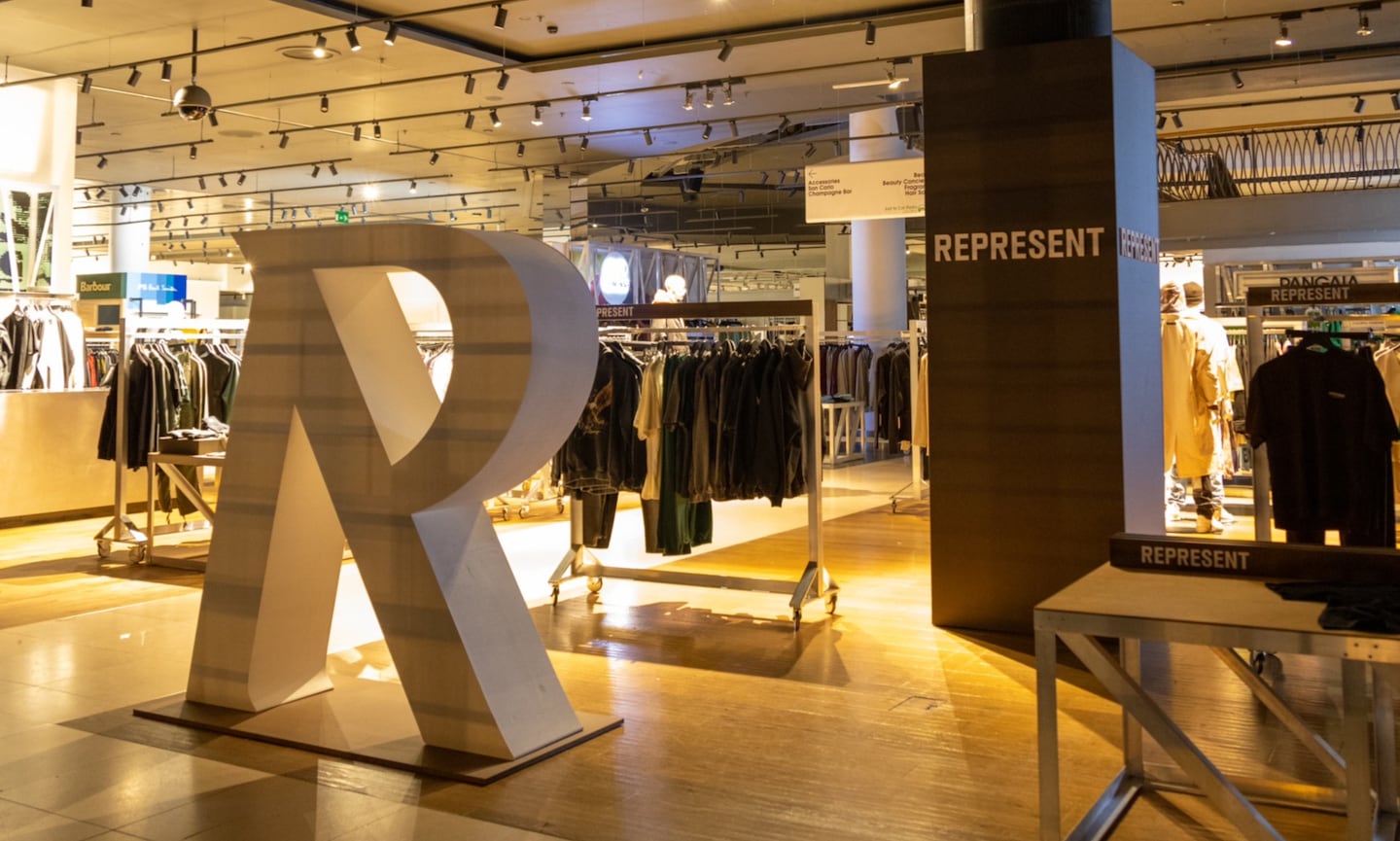
The Business of Fashion
Agenda-setting intelligence, analysis and advice for the global fashion community.

Agenda-setting intelligence, analysis and advice for the global fashion community.

“Thank you so much! I loved your pieces… just picked up a few things from the Ssense in Montreal,” read a direct message on Instagram two weeks ago from American singer-songwriter Giveon to Bukki Ojo, founder of London-based Seventh Stores. For Ojo, it was a validation of her decision to pursue her first wholesale deal, which launched with the Canadian retailer in October.
When she started Seventh Stores in 2019, “wholesale was at the very back of my mind,” Ojo said. She focused instead on building an online community around her minimalist, pastel hoodies, bomber jackets and combat trousers via eye-catching TikTok and Instagram accounts and offline with pop-ups and invite-only gatherings.
“Wholesale is…a great opportunity to be exposed to new global markets and diverse customer profiles,” said Ojo.
Despite multi-brand retailers’ troubles over the last decade, wholesale is still the goal for many emerging brands once they reach a certain size. Retailers can put a label in front of new customers and help with the difficult work of marketing and logistics. It can boost an emerging brand’s reputation when shoppers see its creations displayed alongside well-known names.
ADVERTISEMENT
But first, young designers have to catch the attention of a retailer.
The opportunity is there: retailers are constantly on the lookout for new brands to refresh their assortments. They’re also increasingly counting on new labels to fill space vacated by larger brands such as Gucci, Prada and Nike, which are steering more sales to their own channels.
But buyers are also inundated with pitches. Having industry connections and a good sense of a retailer’s target customer still counts for a lot. Small brands also need to prove they have the cash flow and production capacity to fulfil a store’s orders. And most importantly, they must have designs that are going to appeal to shoppers when stocked with dozens of other brands in a department store or e-commerce site.
“In the end it all comes down to the actual product and quality,” said Tiffany Hsu, Mytheresa’s vice president of womenswear buying. “The market is very saturated and you need to offer something different to what’s out there already.”
The hashtag “#seventhstores” has over 800,000 views on TikTok, and the brand’s baggy-fitting minimalist clothing regularly features in creators’ street-style videos. That meant there was a built-in audience for the Ssense launch.
“I was in Montreal last week and made an appointment for a fitting [at Ssense’s flagship store]. I got the gray v2 sweats. About to cop the matching hoodie to complete the set,” a shopper commented on the brand’s Instagram earlier this month.
Going viral on social media can be the most direct way to attract attention from a retailer. Posts can give buyers a sense of the brand’s values, audience and consumer demographic, said Bosse Myhr, director of menswear and womenswear at Selfridges.
“It’s the quickest way to check a brand out and to get a feel for what they are all about,” Myhr said.
ADVERTISEMENT
TikTok and Instagram can also attract celebrity fans, another quick route to a wholesale partnership.
“Celebrity placements are invaluable for emerging brands, and some good press is really key to success,” said retail specialist Harry Fisher, who through his agency, Htown, has launched the wholesale businesses of brands such as Nensi Dojaka, Maximilian and Mowalola.
UK menswear brand Represent’s wholesale business exploded off the back of celebrity endorsements from Justin Bieber, Dua Lipa and others. Starting with Selfridges in 2015, the brand is now stocked by over 150 stores worldwide, including End Clothing and Harvey Nichols.
Womenswear brand Di Petsa built an online reputation through relationships with stylists, which led to celebrity placements and magazine features. (Its “Wetlook” dress was a hit with fashion editors and stars like Doja Cat, Kylie Jenner and FKA Twigs). The attention in turn led to the luxury boutique LN-CC in London, which stocked its Spring/Summer 2021 collection, said Dimitra Petsa, the label’s founder. Using this momentum, Petsa secured further deals with other boutiques such as Annie’s Ibiza, as well as larger accounts like Selfridges and Ssense.
It’s possible to catch a retailer’s attention offline too. Caspar Coppetti, co-founder of Swiss performance footwear label On, turned in person to hundreds of stores to take buyers out for impromptu “lunch runs,” convincing them to buy the brand’s running shoes on the spot.
All the star power in the world won’t help an emerging brand if it delivers its merchandise late or can’t mass produce the looks that drew attention on the runway or on Instagram.
“You need to really be realistic with what you can deliver on and not overstretch your business or cash flow, especially for your first season,” said Petsa.
Small brands need to consider if they have enough money to produce their initial wholesale orders, as retailers don’t always offer an upfront deposit to begin production, especially as it’s typical to wait up to 30 to 60 days from delivery before receiving the first payment from a retailer, she added.
ADVERTISEMENT
On the bright side, a smooth run with one retailer — delivering the right items at the right time and the right price point — can boost a brand’s reputation with others.
“The snowball effect is very apparent when a fashion brand is selling well, delivering on time,” said George Heaton, co-founder of Represent. “Word travels quickly within the industry.”
When formally pitching to stores, the little things matter too, buyers say. Pitches with assets that are easy to view, include links to coverage from major publications and provide comprehensive information about the brand are more likely to be successful, said Fisher, who also stocks brands at his multi-brand boutique, Htown Store, in east London.
“The best way to impress a store, other than with groundbreaking designs, is to be organised and have your business together,” Fisher said. “Rule number one: buyers do not download files, especially big ones. Assets need to be viewable in the email, maximum total attachment should be under 18MB.”
Timing matters, too.
Emerging brands should consider selling during the men’s buying schedule, when buyers have more budget, Fisher advises, as most major wholesale accounts are less likely to bet on emerging brands during the more congested women’s schedule.
Finally, designers should be prepared for the inevtiable question asked by all buyers ask of new brands: “How does your brand fit with our store?”
“It’s really important to think about this, and to learn about the stores you are having conversations with,” Fisher said. “It will also help a brand understand their own customer and target demographic.”
For up-and-coming brands, a few small, cleverly designed stores in the right locations can have a bigger impact than a giant flagship
After a hard pivot to e-commerce during the pandemic, many brands are back to working with retailers. This time, they say the terms have changed in their favour.
When even Glossier and Allbirds are signing deals with multi-brand retailers, it’s clear the go-it-alone era is over. Here’s how some new brands are building wholesale into their business plan from the get-go.

Daniel-Yaw Miller is Senior Editorial Associate at The Business of Fashion. He is based in London and covers menswear, streetwear and sport.
The company, under siege from Arkhouse Management Co. and Brigade Capital Management, doesn’t need the activists when it can be its own, writes Andrea Felsted.
As the German sportswear giant taps surging demand for its Samba and Gazelle sneakers, it’s also taking steps to spread its bets ahead of peak interest.
A profitable, multi-trillion dollar fashion industry populated with brands that generate minimal economic and environmental waste is within our reach, argues Lawrence Lenihan.
RFID technology has made self-checkout far more efficient than traditional scanning kiosks at retailers like Zara and Uniqlo, but the industry at large hesitates to fully embrace the innovation over concerns of theft and customer engagement.